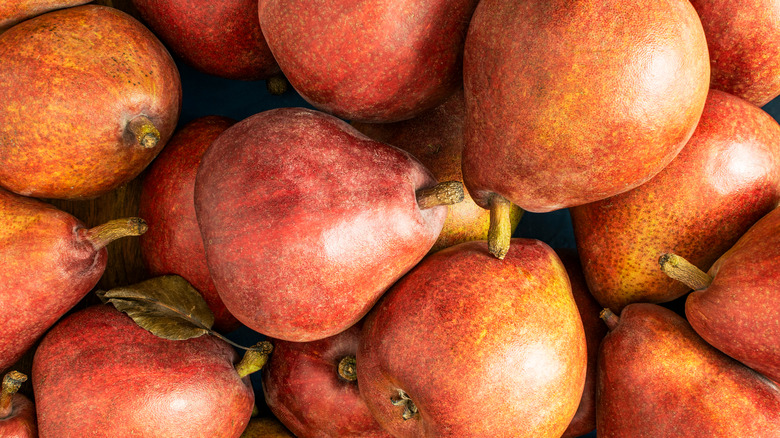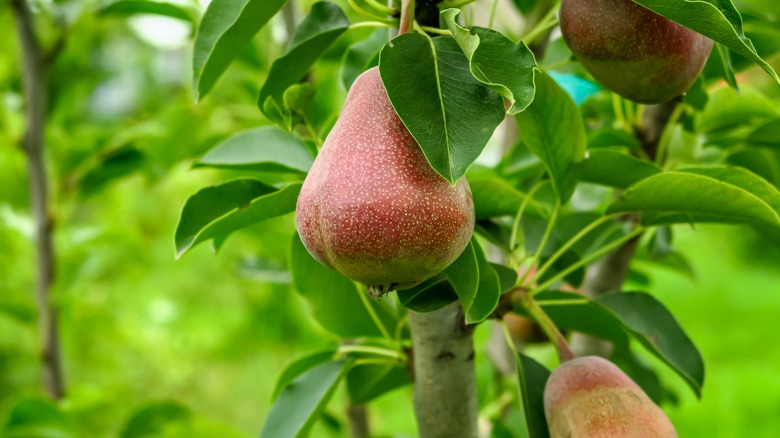The Mutation That Makes Some Anjou Pears Red
Pear trees have been offering up their sweet and softly dense flesh since ancient times, according to the Wisconsin Department of Public Instruction. Today, pears are not only a favorite for eating out of hand, but for slicing into salads, baking into pies and tarts, and even pairing with gorgonzola and walnuts to create a ravioli filling that might best be described as a revelation. Not surprisingly, that Pear and Gorgonzola Ravioli recipe calls for fresh Anjou pears, whose "tempered sweetness" combines well with both cheese and pasta, according to Vegetarian Times.
What the recipe doesn't happen to mention is that you can use either Green Anjou pears or Red — and that's because inside the skin there is no discernible difference, per Stemilt Growers, at least in terms of taste and texture. In fact, the Red Anjou even has the same squat egg-like shape as the Green, per USA Pears.
Nutritionally speaking, however, the Red and the Green varieties of d'Anjou are distinct — provided you eat your pear with its skin on. Only those with red skin offer a concentrated hit of anthocyanins, which are plant compounds that offer various health benefits (via a 2008 paper published in Physiologia Plantarum and a 2017 paper published in Food & Nutrition Research). So, perhaps you'll find it as surprising as we did that the fact that Red Anjou pears exist at all is because of happenstance. Specifically, it was a genetic accident — a mutation — that occurred on a Green Anjou tree.
The Red Anjou pear is a pretty good sport
"The Pears of New York," a book published in 1921, included an illustration of a red Anjou pear, per CooksInfo. Whether this was one of a kind or one of many is lost to history, because the Red Anjou's official origin story begins more than 30 years later in Medford, Oregon. It was there that sometime during the 1950s, as USA Pears tells it, an Anjou pear tree, which, as far as anyone knew, had only ever produced green pears, bore a branch on which red pears grew.
Since the tree's owner hadn't done anything to make that happen, it was deemed a mutation — or, a spontaneous change in the genetic makeup of that particular branch, per Gardening Knowhow. In plant terminology, this is known as a "bud sport," where the word "sport" refers to a mutation, and the modifier "bud" refers to its being observed on a single branch, as opposed to the entire tree. Although mutations are rare, per Scientific American, this one actually occurred again in the 1970s in Parkdale, Oregon.
Gardening Knowhow states that Red Anjou pears were "introduced to the market" soon after that first mutation was observed in the '50s. Since it can take anywhere from three to 10 years to cultivate a fruit-bearing pear tree from seed (via MasterClass), we'll have to assume it was soon after the discovery of this unique bud sport that cultivation of the Red Anjou began in earnest.

